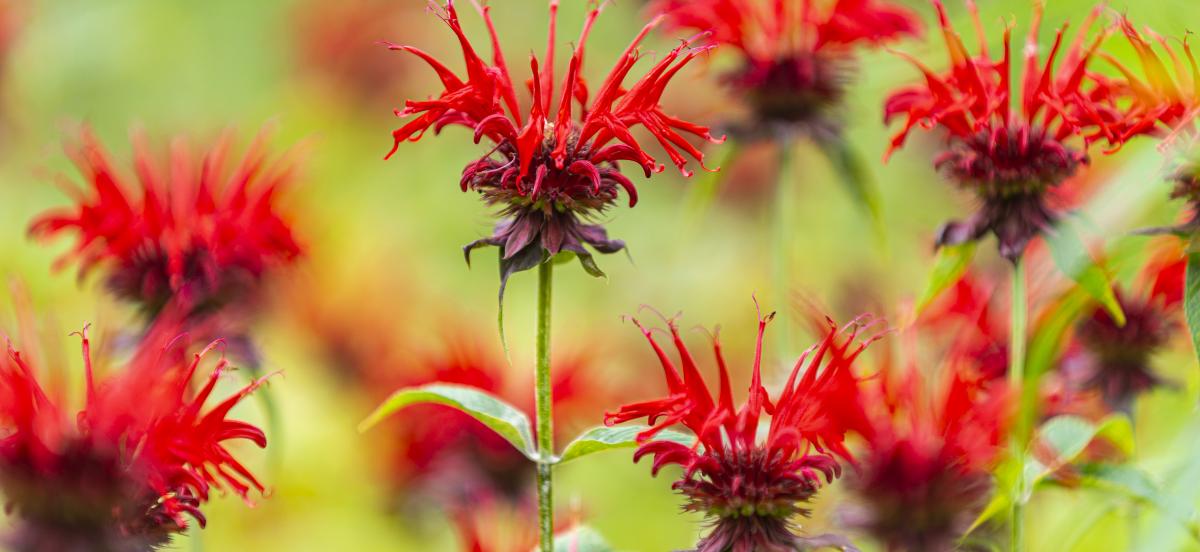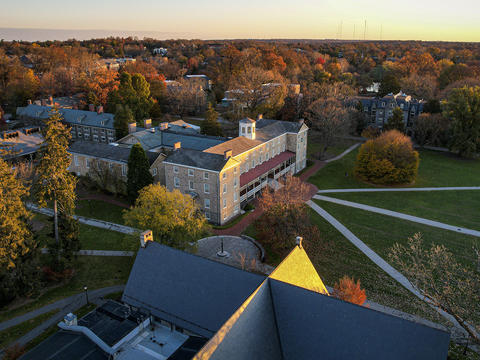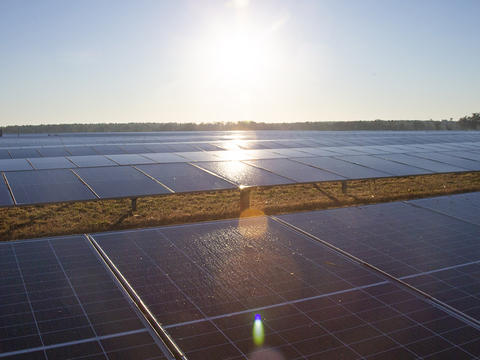How to Make Your Backyard More Environmentally Friendly this Summer

Red flowers in the rain garden adjacent to the VCAM building. Photo: Patrick Montero.
Details
As we head into summer, now is the perfect time to begin thinking about what you can do to make your home more environmentally friendly. By implementing these green practices at your home this summer, you can reduce your carbon footprint while also creating a wonderful space for you and your family to enjoy.
As we head into summer, now is the perfect time to begin thinking about what you can do to make your home more environmentally friendly. By implementing these green practices at your home this summer, you can reduce your carbon footprint while also creating a wonderful space for you and your family to enjoy. Not only can many of these practices save you time and money, but you can also feel good knowing that you are helping the planet.
- Make your Lawn “Greener”
Manicured lawns can be a real drain on the environment. Frequently, they require large amounts of water as well as fertilizers and herbicides to maintain them in their picture-perfect state. Not only do these chemicals pose a potential health hazard for pets and people, fertilizers and herbicides can also runoff into local streams and rivers, harming fish and other wildlife. Additionally, lawnmowers release volatile organic compounds (VOCs) and carbon dioxide into the atmosphere, contributing to air pollution and climate change. The Arboretum mows certain areas on campus less frequently, such as Barclay Beach, to reduce our impact on the environment. Instead of mowing your entire lawn, consider leaving part of it unmowed. By leaving a portion unmowed, you can create a habitat for wildlife and pollinators to enjoy while also reducing your carbon footprint. Not only do you save time, but you also help out the environment.
Instead of having only grass in your backyard, you can also try incorporating other ground covers into your yard, such as clover and moss, which are low maintenance and friendlier for the environment. Although clover is often seen as a nuisance in yards, the flowers are loved by bees and other pollinators. Also, because clovers are nitrogen-fixing legumes, they release nitrogen into your soil, acting as a natural fertilizer. Clover and moss often grow well in shady spaces and can provide various benefits to your lawn, including reducing the germination of weed seeds and protecting your soil from erosion and water loss.
For the parts of your lawn that are grass, consider cutting the grass high (about 4”), which encourages deeper root growth, prevents the sun from drying out the soil, and reduces weed seed germination. You can also leave grass clippings on your lawn to act as a natural fertilizer for your soil, or you can throw untreated grass clippings into a compost bin (see tip #4 below). If you would like to use fertilizer on your grass, consider an organic fertilizer. However, you should also limit your use of organic fertilizers as they can add excess nutrients into stormwater runoff, which can negatively impact local waterways. Also, instead of using gas-powered lawnmowers, leaf blowers, and weed whackers, consider purchasing electric versions. Electric lawnmowers are quieter, require less maintenance, and are cleaner for the environment.
- Create a Rain Garden
This summer, you can also convert part of your lawn into a beautiful rain garden. By planting native wildflowers and shrubs in your rain garden, you can create a haven for pollinators while also beautifying your backyard. Rain gardens collect stormwater runoff and cut down on the number of pollutants reaching streams and rivers. Rain gardens provide numerous other benefits, which are outlined in this informational guide by the USDA. We have multiple rain gardens around campus, including one adjacent to the Visual Culture, Arts, and Media (VCAM) building and a newly-built rain garden in front of the Campus Center.
- Start a Vegetable Garden
Another way to make your home more environmentally friendly this summer is by starting your own vegetable garden. Sourcing local food is a great way to reduce your carbon footprint. Home-grown fruits and vegetables are also delicious and packed with nutrients. If you have space in your yard, consider building a few raised beds. Raised beds are a great option if you are a beginner gardener, especially if you are unsure about your soil quality.
If you don’t have a backyard space to start a garden, consider container gardening. You can use containers to grow a variety of fruits, vegetables, and herbs in a small amount of space. It is relatively easy to start a container garden, and they do not require as much maintenance as a larger garden. Container gardens can also be grown indoors. If you don’t have space for a garden at home, you can also see if there are any local community gardens near you. You could also try starting your own community garden if you cannot find any in your area. If you live near Haverford, the Haverfarm also has some plots that can be reserved by community members for use from May to the end of October.
You can also reduce your water usage while watering your garden by collecting rainwater in rain barrels, buckets, or other containers that you have lying around your backyard. These containers collect the water that flows from the outlet of your gutter’s downspout. If you use open containers to collect rainwater, be sure to not let them sit out for too long before using them since this could allow mosquitoes to breed. Not only do you save money on your water bill by collecting rainwater, but you can also help the environment by reducing your water usage.
- Start Composting
Starting your own composting bin is a great way to reduce your amount of waste while also creating rich, nutrient-dense soil to nourish your garden. Compost acts as a natural fertilizer that encourages the growth of beneficial bacteria and fungi in your soil. A variety of items can be composted, including waste from fruits and vegetables, eggshells, coffee grounds, leaves, and paper. Compost bins are typically placed outdoors, but smaller versions can also be maintained indoors. You can use a trash can with holes drilled into the bottom, an old wooden bin, or other items you have available at home to make your compost bin. You can even just have a heap of compost without a bin!
If you make a compost pile in your backyard, choose a dry, shady spot near a water source. You may need to occasionally wet and turn the compost pile. There are many resources online to help you start composting, including this informational guide by the EPA. If you do not have space available outdoors, you can also buy or build a special compost bin for indoors. Vermicomposters, which utilize worms to break down organic matter, are particularly well suited for indoor use. Come join the Arboretum for a virtual workshop on vermicomposting on Wednesday, July 21, at 2 PM if you would like to learn more about this form of composting and how you can start your own vermicomposter!
---------------
Now is a great time to implement some of these environmentally-friendly practices into your backyard this summer. As many events and vacation plans continued to be delayed or canceled for this summer, why not try starting that vegetable garden or compost pile that you have been meaning to begin? By making changes within our own homes and communities, we can all take steps to reduce our carbon footprints and have a positive impact on the environment.



